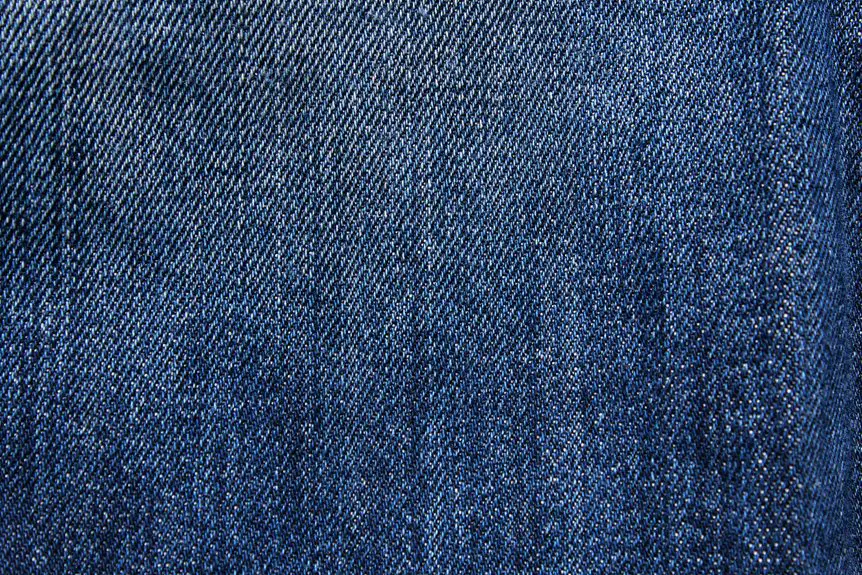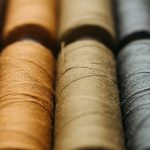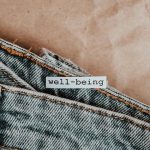Yes, polypropylene is a fabric made from a synthetic polymer known for being lightweight, durable, and moisture-resistant. You’ll find it in activewear, outdoor gear, and even medical textiles due to its quick-drying and stain-resistant qualities. It doesn’t absorb water, so it keeps you comfortable during workouts or in wet conditions. While it’s not as stretchy as nylon, polypropylene offers excellent thermal insulation with easy maintenance. Keep exploring to discover its unique benefits and care tips.
Table of Contents
Key Takeaways
- Polypropylene is a synthetic fabric made from a polymer known for being lightweight, durable, and moisture-resistant.
- It does not absorb water, making it quick-drying and ideal for activewear and outdoor gear.
- The fabric is chemically resistant, stain-resistant, and easy to maintain with proper care.
- Polypropylene offers excellent thermal insulation, keeping users warm without added bulk.
- Compared to polyester and nylon, polypropylene dries faster and resists moisture better, enhancing comfort in various applications.
What Is Polypropylene Fabric?
Polypropylene fabric is a type of synthetic textile made from the polymer polypropylene. When you choose this fabric, you’re opting for something lightweight, durable, and moisture-resistant.
It doesn’t absorb water like natural fibers, so it dries quickly and helps keep you dry during workouts or outdoor activities. You’ll find polypropylene fabric in various products like activewear, thermal underwear, and even reusable shopping bags.
It’s also resistant to stains and chemicals, making it easy to clean and maintain. Because it’s less prone to stretching or shrinking, your clothes will keep their shape longer.
If you want a fabric that performs well under pressure and won’t weigh you down, polypropylene fabric is a smart choice for both comfort and practicality.
How Is Polypropylene Fabric Made?
Although the process might seem complex, making polypropylene fabric starts with melting the raw polymer pellets.
Once melted, the polymer is pushed through spinnerets to form fine filaments. These filaments cool and solidify quickly, creating fibers.
Next, the fibers are stretched to align the molecules, improving strength. Then, the fibers are spun into yarn, which can be woven or knitted into fabric.
Here’s a quick overview of the process:
- Melt polypropylene pellets into a liquid form
- Extrude the molten polymer through spinnerets
- Cool and solidify the filaments rapidly
- Stretch fibers to enhance strength and durability
- Spin fibers into yarn for fabric production
This method gives polypropylene fabric its unique characteristics and wide range of uses.
Key Properties of Polypropylene Fabric
Durability stands out as one of the most important qualities you’ll find in polypropylene fabric.
You’ll notice it resists wear and tear far better than many other materials, making it last longer under frequent use. You’ll also appreciate its lightweight nature, which keeps your garments or products comfortable without sacrificing strength.
Another key property is its moisture-wicking ability; polypropylene doesn’t absorb water, so it dries quickly and helps keep you dry.
Additionally, it’s resistant to chemicals and stains, meaning it stays clean and maintains its integrity even when exposed to harsh substances.
Plus, polypropylene offers excellent thermal insulation, keeping you warm without bulk.
When you consider these features, it’s clear why polypropylene fabric performs so well in various conditions.
Common Uses of Polypropylene in Textiles
You’ll find polypropylene used in countless textile applications thanks to its unique blend of strength, lightness, and moisture resistance.
When you look around, this fabric is often behind everyday items that need durability without extra weight. Its water-repellent nature keeps you comfortable, making it ideal in active settings. Polypropylene’s quick-drying ability means it suits outdoor and performance gear perfectly.
Here are some common uses you’ll see:
- Athletic wear and base layers
- Outdoor gear like tents and backpacks
- Upholstery and furniture coverings
- Medical textiles, including surgical gowns
- Industrial fabrics such as ropes and tarps
These applications showcase polypropylene’s versatility, proving it’s more than just another synthetic fabric in the textile world.
Advantages of Polypropylene Fabric
Because polypropylene fabric resists moisture and dries quickly, it keeps you comfortable during intense activities or in humid conditions. You’ll appreciate its lightweight nature, making it easy to wear without feeling weighed down. Plus, it resists stains and chemicals, so it stays looking fresh longer. Its durability means your clothes or gear last through tough use. Polypropylene also provides excellent insulation, keeping you warm even when wet.
| Advantage | Benefit to You |
|---|---|
| Moisture Resistance | Stays dry, prevents chafing |
| Lightweight | Comfortable for active wear |
| Chemical Resistance | Easier to clean and maintain |
| Insulation | Keeps you warm in cold, damp conditions |
Disadvantages and Limitations of Polypropylene Fabric
While polypropylene fabric offers many benefits, you should be aware of its durability concerns, especially when exposed to prolonged sunlight or heat.
You’ll also want to contemplate its environmental impact, as it’s not biodegradable and can contribute to plastic waste.
Understanding these limitations helps you make a more informed choice.
Durability Concerns
Although polypropylene fabric offers many benefits, you should be aware of its durability concerns before choosing it for long-term use.
While it resists many chemicals and moisture, polypropylene can degrade faster under certain conditions compared to other fabrics. It’s sensitive to UV light, which may cause fading and weakening over time.
Additionally, it has low abrasion resistance, so it can wear out quickly with constant friction. You might also find that polypropylene has limited heat resistance, risking damage if exposed to high temperatures.
Finally, its tendency to stretch and lose shape affects durability in activewear or items under stress.
- Susceptible to UV degradation
- Poor abrasion resistance
- Low heat tolerance
- Prone to stretching and shape loss
- Can become brittle with prolonged exposure to harsh environments
Environmental Impact
Polypropylene’s durability issues extend beyond wear and tear, affecting its environmental footprint as well.
When you choose polypropylene fabric, you should know it’s not biodegradable, meaning it lingers in landfills for decades. Its production relies heavily on fossil fuels, contributing to greenhouse gas emissions.
Recycling options exist but aren’t widespread, so much of it ends up as plastic waste. You also face challenges with microplastic pollution since washing polypropylene garments releases tiny fibers into waterways, harming aquatic life.
While polypropylene’s moisture resistance is great for performance wear, it makes the fabric less eco-friendly overall.
If you’re environmentally conscious, you might want to reflect on alternatives that break down more easily or have a lower carbon footprint, balancing durability with sustainability.
How to Care for Polypropylene Garments
You’ll want to follow specific washing guidelines to keep your polypropylene garments in great shape.
Make sure to dry them properly to avoid damage, and tackle stains quickly with the right removal tips.
These simple steps will help your clothes last longer and look their best.
Washing Guidelines
When caring for polypropylene garments, understanding their unique properties helps you avoid damage during washing.
Polypropylene resists water and stains but can be sensitive to high heat and harsh chemicals. To keep your clothes in top shape, follow these washing guidelines carefully.
- Use cold or lukewarm water to prevent fabric distortion.
- Choose a gentle cycle to minimize wear.
- Avoid bleach and fabric softeners, which can degrade fibers.
- Use mild detergent to protect the fabric’s integrity.
- Turn garments inside out to reduce surface abrasion.
Drying Recommendations
Although polypropylene dries quickly, you should avoid high heat to prevent damage. Tumble dry on a low or no-heat setting to maintain the fabric’s integrity and prevent melting or warping.
If possible, air-dry your polypropylene garments by hanging them in a well-ventilated area away from direct sunlight, which can degrade the fibers over time.
Avoid using fabric softeners or dryer sheets, as they can leave residues that affect the fabric’s moisture-wicking properties.
When drying, make certain the garment is evenly spread out to prevent stretching or misshaping. Quick drying is one of polypropylene’s advantages, but gentle care during drying guarantees your clothes last longer and perform better.
Always check the care label for any specific drying instructions tailored to your item.
Stain Removal Tips
Since polypropylene resists stains better than many fabrics, removing spots is usually straightforward if you act quickly.
When you notice a stain, don’t let it set. Blot the area gently with a clean cloth to absorb excess liquid before it penetrates deeper. Avoid rubbing, which can spread the stain or damage the fibers.
Use mild detergents or stain removers designed for synthetic fabrics to treat the area. Rinse with cool water and repeat if necessary.
Here are some quick tips to help you:
- Blot spills immediately with a paper towel or cloth
- Use cold water to prevent setting stains
- Apply a gentle detergent or stain remover carefully
- Avoid bleach or harsh chemicals that damage polypropylene
- Air dry after treatment to preserve fabric integrity
Following these tips keeps your polypropylene garments looking fresh.
Comparing Polypropylene With Other Synthetic Fabrics
If you’re choosing between synthetic fabrics, understanding how polypropylene stacks up against materials like polyester and nylon can help you make a smarter decision.
Polypropylene is lightweight, moisture-wicking, and highly resistant to stains and chemicals, making it ideal for activewear and outdoor gear. Unlike polyester, it dries faster and doesn’t absorb water, which helps keep you dry.
Polypropylene’s lightweight, moisture-wicking properties and quick drying keep you dry and stain-free during active use.
However, it’s less durable and can degrade under prolonged UV exposure compared to nylon, which offers excellent strength and abrasion resistance.
Nylon feels smoother and has better elasticity but absorbs more moisture than polypropylene.
Frequently Asked Questions
Is Polypropylene Fabric Environmentally Friendly to Recycle?
You’ll find polypropylene fabric is somewhat eco-friendly to recycle since it’s a thermoplastic, allowing you to melt and reshape it. However, recycling facilities might not always accept it, so check locally before discarding.
Can Polypropylene Fabric Cause Allergic Reactions?
You might notice mild skin irritation from polypropylene fabric if you have sensitive skin. For example, Sarah developed a rash after wearing a polypropylene sports shirt for hours, but most people don’t experience allergic reactions from it.
How Does Polypropylene Fabric Perform in Extreme Weather Conditions?
You’ll find polypropylene fabric performs excellently in extreme weather—it’s moisture-wicking, quick-drying, and retains heat well. It resists cold, dries fast after rain, and stays durable under intense sun, keeping you comfortable throughout.
Is Polypropylene Fabric Safe for Food Packaging Applications?
Did you know over 50% of food packaging uses polypropylene? You’ll find it safe because it’s resistant to chemicals and moisture, keeping food fresh without leaching harmful substances, making it a popular choice for packaging.
Can Polypropylene Be Blended With Natural Fibers?
Yes, you can blend polypropylene with natural fibers like cotton or wool. Doing this improves durability, moisture resistance, and comfort, giving you a versatile fabric that combines the best qualities of both synthetic and natural materials.
- Does Chiffon Fabric Stink - July 15, 2025
- Does Chiffon Fabric Affect the Economy - July 15, 2025
- Does Cotton Fabric Have a Nap - July 15, 2025







